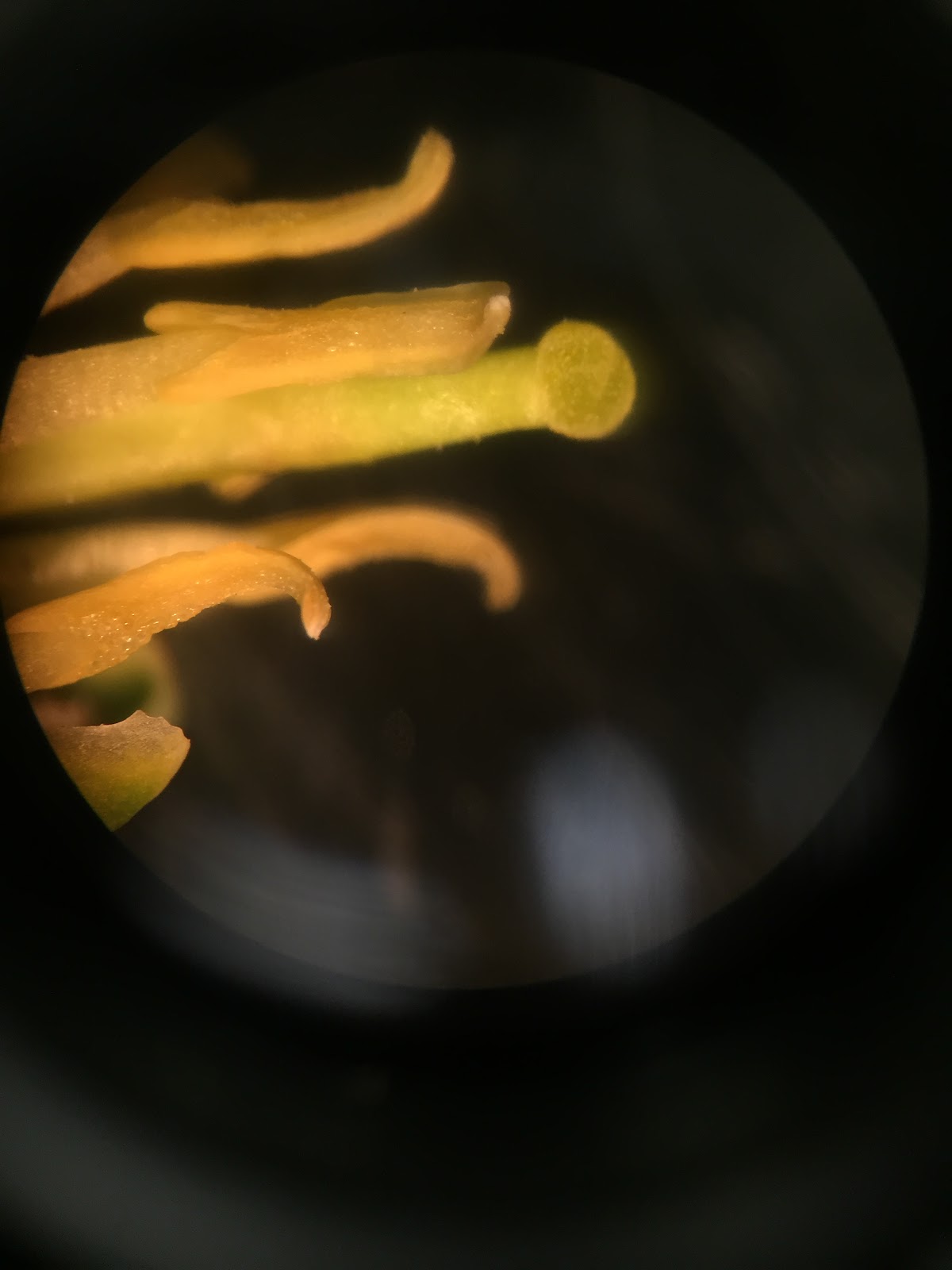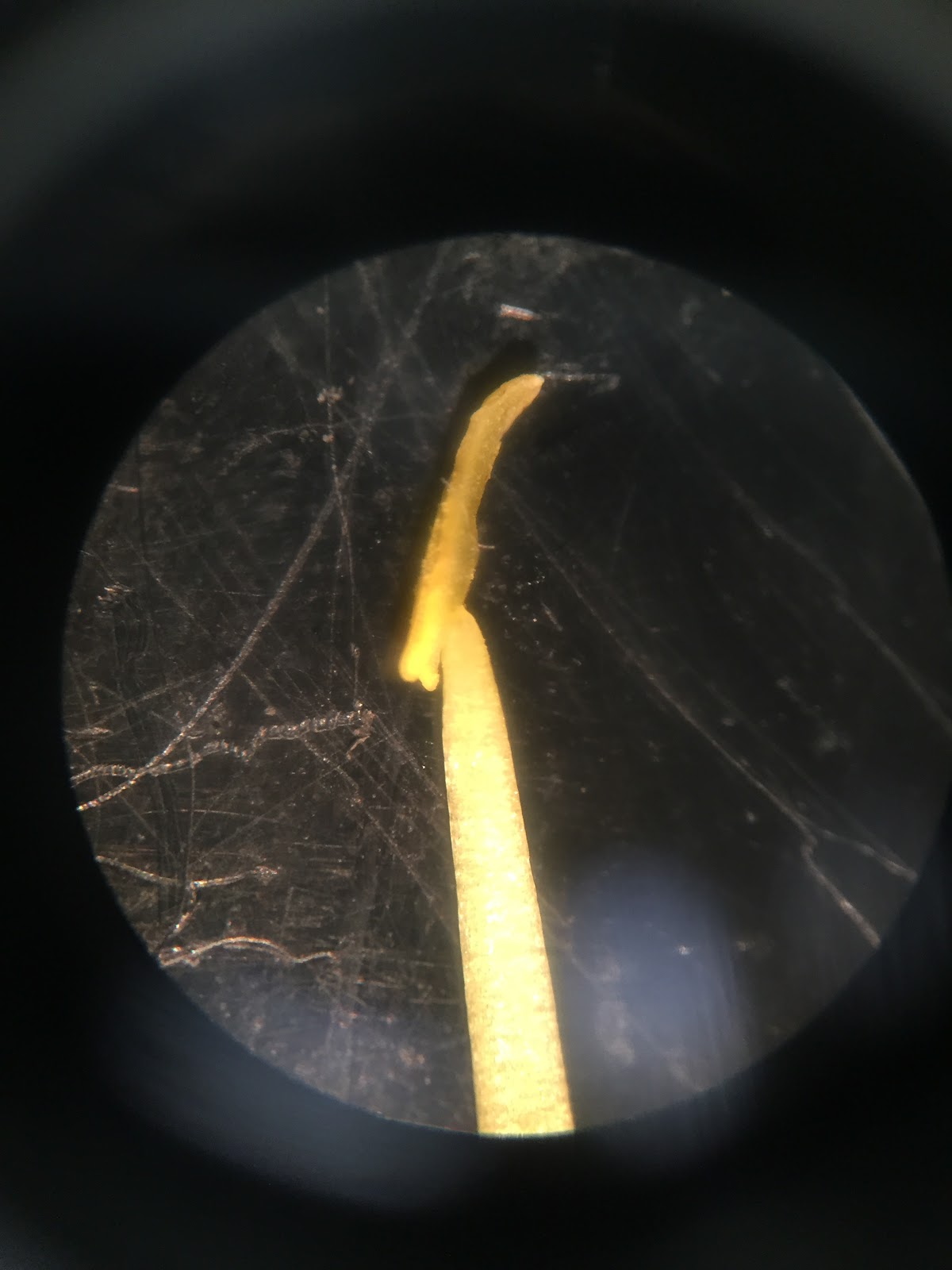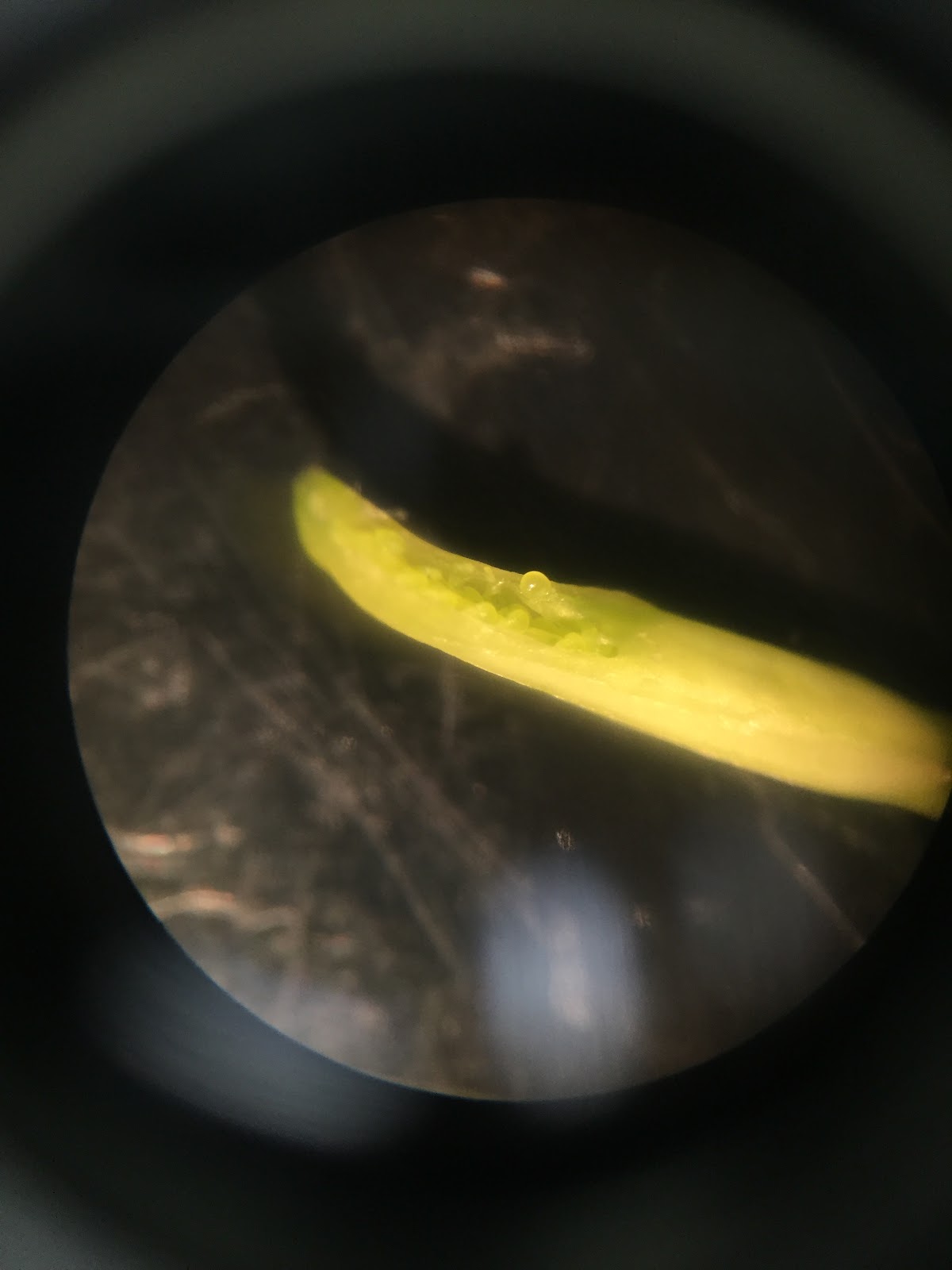This week I dissected a flower in my biology class. During the dissection I got to observe the different parts of the flower up close. I got to see the male’s parts called the anthers and the female’s parts called the stigma, style and ovaries. The pictures shown below are some of the parts I got to observe under the microscope.



This is the ovary where the fertile female cells are held. the capsules or ovules hold these female cells.
This is the carpel. The mushroom like head is called the stigma and its shaft is the style.
This image shows the anther, the male part of the flower where the pollen grains are produced.
This is the ovary where the fertile female cells are held. the capsules or ovules hold these female cells.
Now that you have seen what the plant’s parts look like, here is how they work. First off, flowers are angiosperms, which means that they reproduce within themselves. Every flower has both the male and female parts required to reproduce.The male part of the plant(Stamen) creates pollen which contains the plant's sperm cells. The pollen will eventually find its way onto the female part(Carpel) of the same or different plant species. The pollen can be distributed by insects such as as bees or by wind and animals. When the pollen is transferred to the stigma of another plant, the ovules will be fertilized inside the plant’s ovaries.























